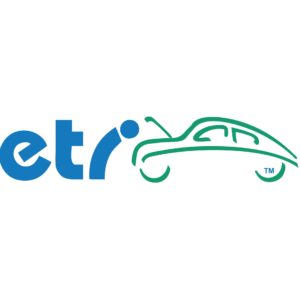
ETI backs pre-, post-repair scans in position statement, makes case for aftermarket tools with OEM licensing
By onAnnouncements | Associations | Business Practices | Education | Market Trends | Repair Operations | Technology
The Equipment and Tool Institute, a trade group dedicated to automotive repair technology, weighed in Tuesday with a position statement on scanning that echoes much of what OEMs have said but criticizes some automakers for stifling aftermarket licensing of their diagnostic data.
The statement appears to be a response to the collision repair and auto insurance industry’s wake-up call in 2016 that scanning was something that needed to happen to properly plan a repair and properly execute that work.
Scanning had been already described for years in OEM repair procedures — but was apparently ignored by many auto body shops and insurance estimators until OEMs started hitting both industries over the head with position statements last year.
“Back in 2013 we wrote and article on the importance of diagnostic scanning and testing,” P&L Consultants observed on Facebook March 2. “Prior to that we mentioned diagnostics in 2008, 2010, 2011 and 2012. Why is this Pre-Post-Scanning such new news?”
The day before, P&L co-owner Larry Montanez pointed out in an Auto Body Repair News column that diagnostics goes back two decades for European OEMs:
For the past 20-25 years, European OEMs have had advanced electronic computer-controlled systems that required scanning to diagnose and reset after repairs. About 12 years ago, when many of the European OEMs started forming their Certified Collision Repair Facility (CCRF) programs, they started mentioning pre-scanning as part of the “Inspections required after a collision” in SOPs. …
Please keep in mind that position statements are an explanation of required procedures contained within the repair manual and/or for clarification about something not fully written out in the repair manual and/or an update, addition, amendment or addendum to a procedure(s).
So ETI — whose members include numerous scan tool manufacturers and other equipment heavy hitters — has got to be shaking its head a little bit in disbelief here.
But it keeps a straight face in describing its position, which expresses support for the attention OEMs have brought to the collision repair issue and agreeing with the idea of scanning vehicles before a repair.
“The Equipment and Tool Institute (ETI) fully agrees with the process of the pre- and post- systems scan position many in the industry are taking,” the organization wrote.
“The electronic safety systems on today’s vehicles are very important for occupant safety and must be checked after a repair for proper functionality. The pre-scan is now necessary for the repair facility to be able to help scope and estimate the repair processes required for a safe and complete repair.”
However, ETI disputes the OEM conclusion that only manufacturer diagnostic tools can be used, citing comparison and cost grounds.
“The need for affordable access to the tools that are essential to perform safe, complete and accurate repairs is extremely important,” ETI wrote. “It is unlikely most shops will be able to justify the purchase cost of multiple OEM scan tools for this procedure since independent body shops work on a great variety of OEM’s vehicles. Thus, the importance of having accurate, timely and affordable OEM scan tool data provided to the aftermarket to ensure our members have the information necessary to fully emulate the factory tool functions.
“While we understand that many of the manufactures do not know the capabilities of all the aftermarket scan tools, we know that many of the higher quality aftermarket tools provide the needed and necessary functions to complete a pre- and post scan properly for a majority of the vehicles they currently service.”
That said, it agreed that collision repairers would have to go OEM in certain situations.
“ETI has no concern with repairers utilizing OEM tools when they are available and endorses their use in situations where they may be needed e.g. vehicles in their early years of service, where coverage may not be implemented in the current aftermarket tool release,” the organization wrote.
The statement also points to a middle ground option: Having the OEMs provide information to scan tool manufacturers — as they’re supposed to be doing anyway by 2018 under right-to-repair agreements worked out by the aftermarket and automakers, according to the ETI. (The separate J2534 standard, also in effect by 2018, will expand OEM reprogramming capabilities to the aftermarket beyond the basic emissions reprogramming already required by law, according to the ETI)
Essentially, a scan tool manufacturer could buy the raw data an OEM provides to whoever is making its factory scan tools and emulate all of the capabilities of the genuine article. Unlike the haphazard reverse-engineering seen on some aftermarket parts, the digital information would be identical and licensed to say, a Bosch, AirPro or Snap-On directly by the manufacturer. Therefore, a scan tool manufacturer could embed the capabilities of multiple OEM scan tools within a single device rather than force a collision repairer to buy, learn and maintain 20-odd OEM scan tools at a cost approaching or reaching six figures.
Some automakers have been great partners to the aftermarket, according to the ETI, while others are more restrictive or imposing licensing costs so restrictive as to make it impossible.
“Data for the development of aftermarket scan tools is provided directly to scan tool manufacturers as agreed by previous contracts in the US so as to be able to fully emulate the factory tool,” the ETI wrote. “Many OEM’s provide this information in an affordable, accurate and timely manner. Yet some OEM’s are less forthcoming and either restrict access to important data or price it at unaffordable levels. These access issue continue to plague the industry.”
More information:
“Equipment and Tool Institute Announces Position Statement: Pre- and Post-Repair System Scanning”
Equipment and Tool Institute, March 7, 2017
Featured image: The Equipment and Tool Institute’s logo. (Provided by the Equipment and Tool Institute)
